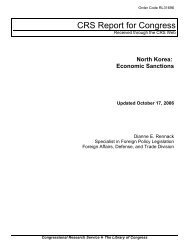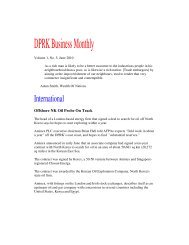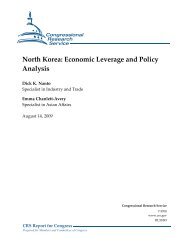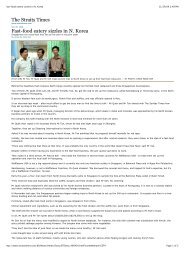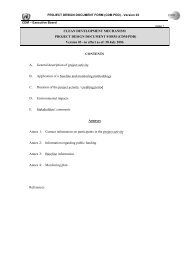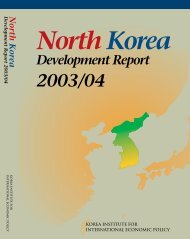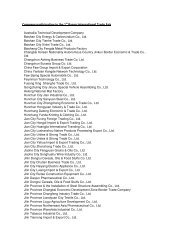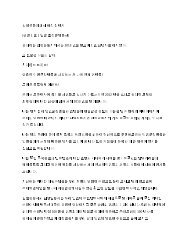North Korean Policy Elites - Defense Technical Information Center
North Korean Policy Elites - Defense Technical Information Center
North Korean Policy Elites - Defense Technical Information Center
You also want an ePaper? Increase the reach of your titles
YUMPU automatically turns print PDFs into web optimized ePapers that Google loves.
policy began to loosen up. Party and state functions appeared to be increasingly delimited, and<br />
other domestic actors, especially the national security establishment, began to move to the<br />
forefront in the domestic policy-making process. But, some institutions suffered relative decline.<br />
For instance, the elections for the Supreme People’s Assembly, whose 9th term expired in the<br />
fall of 1995, were not held until July 1998, and the Assembly failed to convene for four years<br />
following Kim Il Sung’s death. The WPK Central Committee and Politburo held no plenary<br />
meetings, party conferences, or congresses. The DPRK Administrative Council was all but<br />
invisible. The State Presidency and the Central People’s Committee, which had functioned as a<br />
“super-cabinet” of sorts since 1972, were not functioning. Natural attrition of the older “guerrilla<br />
fighter” generation rapidly progressed. Substantively, interpretation and implementation of the<br />
Great Leader’s last will (yuhun chongch’i) amidst aggravating domestic economic crisis and<br />
deteriorating international environment has been the raison d’etre of Kim Jong Il’s rule ever<br />
since.<br />
C. KIM JONG IL’S REVOLUTION FROM ABOVE<br />
In the tumultuous decade following Kim Il Sung’s death on July 8, 1994, after initial<br />
shock and a three-year policy-making hiatus, Kim Jong Il finally took the plunge and introduced<br />
a major constitutional revision and government administration restructuring in September 1998,<br />
followed by a civil-military readjustment and advent of the army-first policy in 2000. He<br />
launched a still-born diplomatic “normalization” offensive and actively pursued summit<br />
diplomacy in 2000-2002, and he successfully pushed through controversial economic<br />
liberalization reforms in July 2002. The First Session of the 10th Supreme People’s Assembly<br />
(SPA) passed a new “Kim Jong Il-era” Constitution, which:<br />
• abolished the institution of the President and Vice-President;<br />
• diminished the powers and status of the Central People’s Committee;<br />
• made the National <strong>Defense</strong> Commission the supreme state organ defining national security<br />
and defense strategy, and economic and political development strategies;<br />
• appointed Kim Jong Il as the de-facto supreme leader;<br />
• made the President of the Presidium of the SPA as a formal “head of state” (plus three<br />
vice-presidents and four “honorary vice-presidents”);<br />
• abolished the Administrative Council and instituted the Cabinet of Ministers composed<br />
mainly of the economic ministries, while all “power-related ministries” were subordinated<br />
directly to the National <strong>Defense</strong> Commission;<br />
• legalized private ownership; and<br />
• curtailed the WPK party rule and expanded the scope of religious freedoms in the DPRK.<br />
IV-10



